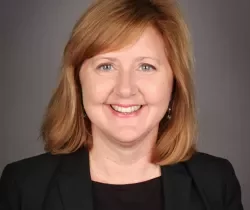The COVID-19 pandemic has reshaped the events industry. We know it’s unlikely that it will just be “over” and things will “go back to normal.” While it’s disheartening to think of what we’ve lost as an industry, we have the exciting opportunity to build a new and better events model. Once in-person events return, building a hybrid meetings model could position your organization for even greater success.
A virtual component added to your in-person experience, whether it is part of a single large annual event or separate stand-alone virtual conferences that connect stakeholders throughout the year, can bring multiple benefits to your organization. It can boost your meeting content by reaching a wider global audience, offer flexible timing and offer real-time engagement through live-streaming.
Here’s how to build a hybrid events model for the future:
Determine the Desired Outcomes of Your Hybrid Event
This process is twofold. Map out the outcomes you want from a virtual component itself and the outcomes you want from the overall hybrid meeting experience. Additionally, as you think about outcomes related to the virtual component, consider how they may differ from those of a solely in-person meeting so that you can align all of the stakeholders’ expectations.
Some examples of outcomes related to the virtual component include:
- To deliver top-quality, timely education or research to attendees that can be immediately applied
- To serve as additional touchpoint with members or your meeting community during the year
- To give increased exposure to your in-person exhibitors (lead generation, brand visibility, providing thought leadership, conducting content presentations and demos)
- To build a wider audience for future in-person events
- To serve as a replacement or supplemental revenue stream for the organization
Some examples of outcomes related to the overall hybrid experience include:
- To offer expanded networking opportunities within the industry
- To offer exhibitors the ability to reach more members of the industry than just those who can attend in person
- To provide education to a global audience that includes those unable to attend in-person
- A longer shelf life for your content and education
Identify Your Hybrid Event Audience
You probably know who attends your event in person, but who else could you reach with virtual components? A hybrid event will be accessible to a wider audience such as young professionals, those who don’t have a travel budget or can’t afford to take extended time away from the office. To identify them, ask “If travel wasn’t a factor, what would motivate people to join our event?” Is it continuing education, networking, exhibits or something else? Can that motivating factor be delivered virtually in order to attract more attendees?
Source Enhanced Technology Solutions
Many technology platforms exist to deliver the virtual experience you desire. After you identify your outcomes, you can research platforms that offer features to facilitate networking, education, exhibits and more.
If you plan to connect your virtual component directly to your in-person event (for example through live-streaming of sessions), ensure the right internet and bandwidth are included in your facility contract. Address other audio-visual and internet needs for your hybrid event with your vendors so that you can deliver a highly produced experience.
Some ways to use technology ensure a positive experience for virtual attendees whether as a separate component or part of the in-person event include:
- Pre-recording presentations so that you have them ready if the streaming video fails
- Allocating time for presenter orientation so that they are familiar with the platform’s functionality to ensure the sessions run smoothly
- Troubleshooting technical glitches
- Assigning a facilitator/moderator to engage the remote audience
- Capturing real-time feedback
- Planning for strong customer support
- Treating attendees as collaborators through digital voting options throughout the planning process
- Selecting software that allows for matchmaking, video calls and discussion boards within sessions.
Reimagine Event Content and Networking
Once you have the first three pieces of your hybrid event plan in place, you’ll be able to work creatively to build a powerful program for both in-person and virtual attendees. Infuse compelling content into your virtual and experiment with different ways to connect the two audiences. Activities such as job fairs and interviews can be held to connect your in-person attendees with virtual participants. You can also include the remote audience in focus groups, which could potentially benefit both the virtual attendee and your exhibitors or sponsors.
Good things often come out of difficult times. Adding more virtual opportunities to your events is definitely adding value for your community. Our world has become much more connected, and engaging global audiences is one more way we can share solutions and learn from each other.
Don’t miss any event-related news: Sign up for our weekly e-newsletter HERE and engage with us on Twitter, Facebook, LinkedIn and Instagram!



Add new comment